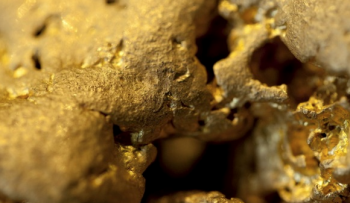
The transition of Evolution Mining
While gold companies generally don’t meet our quality requirements at Montgomery, I thought I would nevertheless focus on a company going through a significant transformation. Evolution Mining (ASX: EVN), led by gold entrepreneur Jake Klein, has completed two significant acquisitions in recent months.
Firstly, the La Mancha Australian assets were acquired from the multi-billionaire Egyptian-based Sawiris family, owners of the Orascom Group of companies. The Frog’s Leg and White Foil mines, west of Kalgoorlie in Western Australia, have added 130,00 to 160,000 annual ounces taking the combined production in the year to June 2016 to around 570,000 ounces (+34 per cent). In addition, the proposed $56 million takeover of Phoenix Gold (ASX: PXG), which adjoins La Mancha’s ground, makes commercial and geological logic.
Before the ink was dry on La Mancha, Evolution acquired the Cowal gold mine located 95 kilometres South-West of Parkes in Central NSW for close to A$750 million from Barrick Mining. Evolution’s management team believe they can eventually get more than the 250,000 ounces annually out of Cowal and they are also hopeful of improving the reserve and resource profile via exploration success from the tenement package of 6,000 square kilometres.
Shares on issue have doubled from 717 million to 1,440 million (of which the Sawaris family control 31 per cent). At the prevailing $1.19 per share, the market capitalisation is $1.7 billion – quite a jump from the $315 million the company was being valued at in late 2014.
Post the recent capital raising of $360 million at $0.90 per share, net indebtedness approximates $590 million and Evolution’s Enterprise Value is $2.3 billion. For this we get annual production of around 820,000 ounces, a gold reserve approaching 5 million ounces and a gold resource of 11.8 million ounces.
Importantly the slightly lower cost, longer life of the La Mancha and Cowal assets assists Evolution’s transformation in more ways than just ounces produced. For example, the AISC costs – which include C1 cash costs plus royalty expense, sustaining capital expense and general corporate and administration expense – is $928/ounce for the Australian La Mancha assets and $853/ounce for Cowal, and this compares to $1,032/ounce for Evolution Mining’s five relatively mature high cost mines – Mt Carlton, Mt Rawdon, Cracow and Pajingo in Queensland and Edna May in Western Australia. The combined AISC cost should come down around 7 per cent to $960/ ounce and this is forecast to push Evolution’s EBITDA to Sales margins up from 42 per cent to 46 per cent.
While Montgomery Investment Management doesn’t generally troll for companies within the Resource Sector, Evolution Mining seems to tick a number of boxes. The two large acquisitions costing close to $1.15 billion will see an enormous increase in production, reserves, resource, estimated earnings margins, shares on issue and indebtedness. While time will tell how this will translate into earnings, the market certainly seems to like both moves so far.
To learn more about our domestic and global funds, please click here, or contact me, David Buckland, on 02 8046 5000 or at dbuckland@montinvest.com.